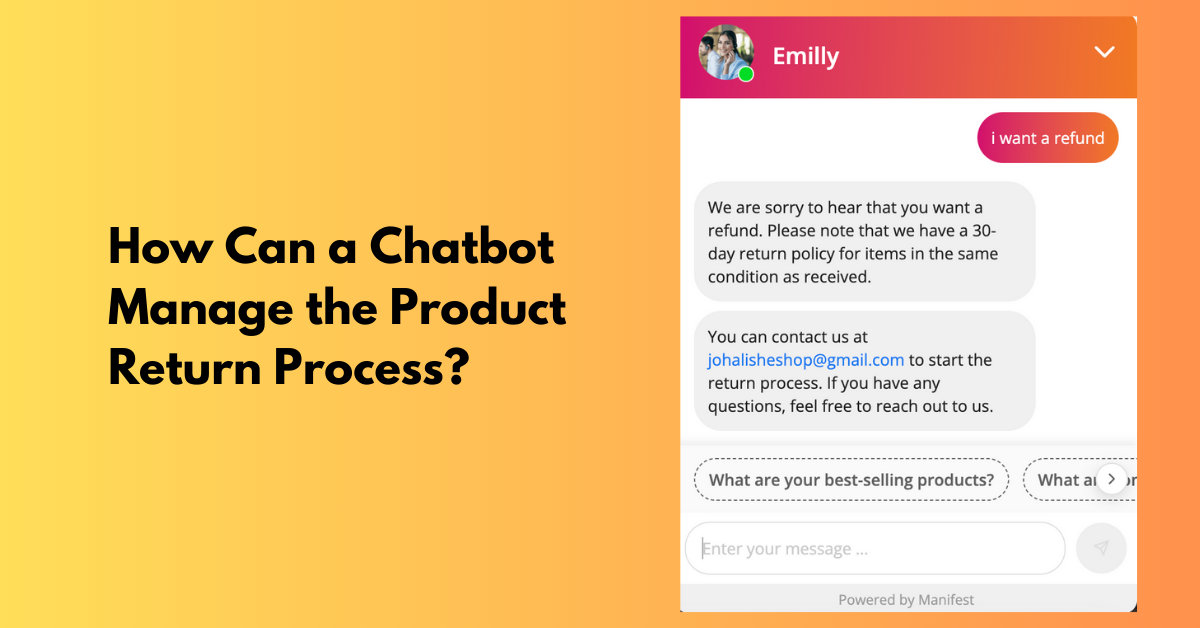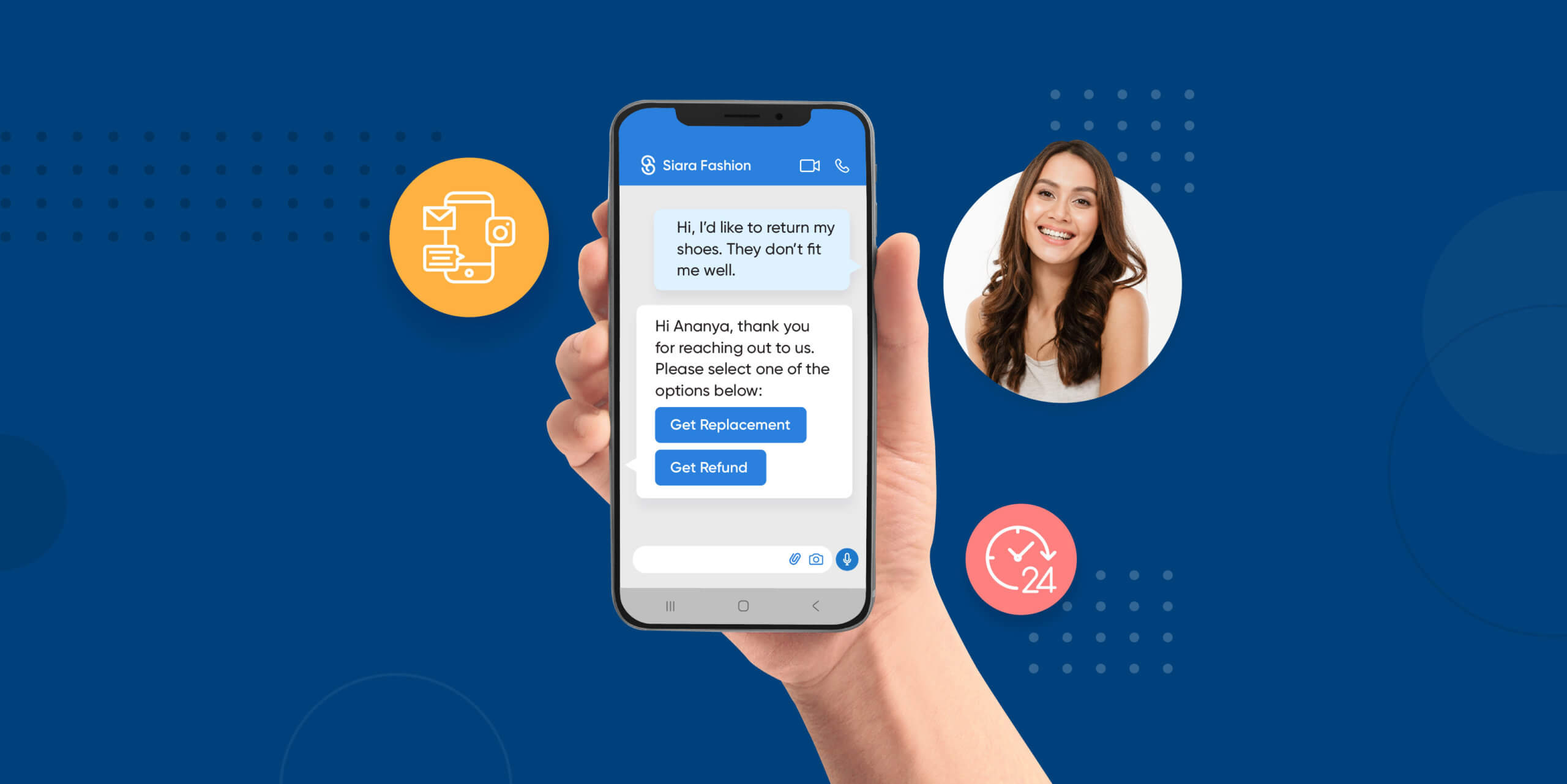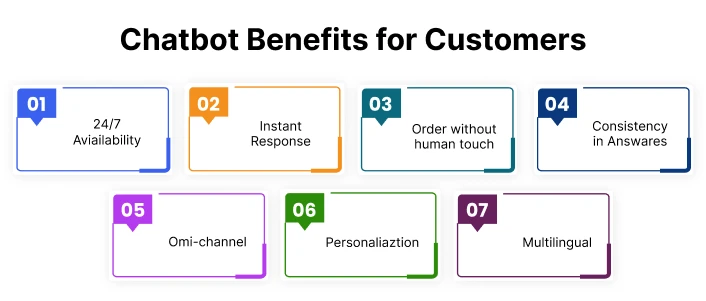How Can a Chatbot Manage the Product Return Process? (2024)

Handling the product return process efficiently is crucial for maintaining customer satisfaction and loyalty. In 2024, businesses are increasingly turning to chatbots to streamline this process. Statistics show that implementing chatbots can reduce customer service costs by up to 30% while speeding up response times for return inquiries.
This blog will explore how chatbots can effectively do product returns management, from initiating returns based on predefined criteria to providing customers with immediate assistance and necessary return instructions, thereby enhancing the overall efficiency of customer service operations.
Why use a chatbot to handle returns?

Using a chatbot to manage returns offers several advantages that can significantly improve both the efficiency of the return process and the overall customer experience. Here’s why integrating chatbots into the return process is beneficial:
Immediate Response: Chatbots are available 24/7, providing immediate responses to customers initiating returns. This constant availability reduces wait times and enhances customer satisfaction, as consumers can resolve their issues at their convenience.
Consistency and Accuracy: Chatbots follow programmed guidelines to ensure that information relayed to customers is consistent and accurate. This reduces errors in the return process, ensuring customers receive the correct information regarding return policies and procedures.
Cost Efficiency: Automating the return process with chatbots can considerably reduce labor costs. Chatbots handle routine inquiries and processes, freeing up human customer service agents to focus on more complex issues that require human intervention.
Data Collection: Chatbots can gather valuable data from return interactions, such as common reasons for returns or customer feedback on the process. This data can be used to improve product quality and the efficiency of the return process itself.
Scalability: During peak times, such as after the holiday season, chatbots can handle a high volume of return requests without the need for scaling up human resources. This capability makes chatbots a scalable solution that can adjust to varying demands without compromising service quality.
How can a chatbot manage the product return process?
A chatbot can effectively manage the product return process by automating and simplifying several key steps, ensuring that both customers and retailers experience a smooth and efficient return flow. Here’s how a chatbot accomplishes this:
- Initiating the Return: When a customer wants to return a product, the chatbot can be the first point of contact. It can quickly gather details about the purchase by asking the customer to provide an order number or product details and confirm the eligibility for return based on the purchase date and the company’s return policy.
- Explaining the Return Policy: The chatbot can clearly communicate the return policy to ensure the customer understands the terms, such as the return window, refund options, and conditions for return. This helps set the right expectations and reduces confusion.
- Processing the Return Request: If the return is approved, the chatbot can generate a return authorization and provide the customer with a printable shipping label or instructions for in-store returns. It can also schedule a pickup for the item if required, coordinating with logistics partners directly.
- Updates and Feedback: Throughout the return process, the chatbot can keep the customer updated on the status of their return and refund. Once the process is complete, it can also solicit feedback about the return experience, providing valuable insights that can be used to improve service in the future.
Benefits of handling product returns with Chatbot

Implementing chatbots to handle the product return process offers several tangible benefits that can significantly enhance customer service operations and streamline the returns process. Here are the key advantages:
- Increased Efficiency: Chatbots can handle multiple return inquiries simultaneously, 24/7, without the need for breaks or shifts. This capability significantly speeds up the response time for initial return requests, allowing customers to initiate returns instantly at their convenience. Automated responses guide customers through the return process without delays, reducing the workload on human customer service representatives.
- Consistency in Service: Chatbots follow programmed guidelines to ensure that all customers receive uniform information and service. This consistency helps in upholding the company's return policies accurately and fairly, preventing misunderstandings or errors that might occur with human agents.
- Reduced Operational Costs: By automating the initial stages of the return process, chatbots cut down on the labor costs associated with handling returns. This automation allows customer service teams to focus on more complex queries and issues, optimizing resource allocation and potentially lowering overall customer service costs.
- Improved Customer Satisfaction: Chatbots can transform the return process into a hassle-free experience for customers. Quick, straightforward, and always available, chatbots ensure that customers can initiate returns without the usual friction associated with lengthy phone calls or email exchanges. This ease of use can lead to higher levels of customer satisfaction and loyalty.
- Data Collection and Analysis: Chatbots can gather data from each interaction, providing valuable insights into common reasons for returns, customer behavior, and potential areas for product improvement. This data can be analyzed to reduce future return rates and enhance product quality.
- Scalability: Chatbots are easily scalable to handle higher volumes of returns without the need for significant additional resources. During peak times, such as the holiday season, chatbots can manage the increased load without compromising the quality of customer service.
How to reduce product returns using a chatbot?
Chatbots can significantly streamline the product return process, offering businesses a way to handle returns more efficiently while maintaining high levels of customer satisfaction. Here’s how chatbots achieve this:
- Immediate Response: Chatbots are available 24/7, allowing customers to initiate returns at any time without waiting for business hours or human agent availability. This immediate response improves customer experience by providing instant acknowledgment of their concerns.
- Automated Return Authorization: Chatbots can be programmed with the company’s return policies and criteria for acceptable returns. They can automatically assess whether a product is eligible for return based on the customer’s inputs (e.g., purchase date, reason for return). This reduces the need for manual review and speeds up the authorization process.
- Guided Instructions: Once a return is authorized, the chatbot can guide customers through the necessary steps. This includes providing packaging instructions, generating return labels, and directing customers on how to schedule a pickup or where to drop off the package.
- Error Reduction: By automating data entry and processing, chatbots minimize human error. They ensure that return procedures are followed correctly, which helps in the accurate and timely processing of returns.
- Feedback Collection: Chatbots can also solicit feedback during the return process, asking customers about their reasons for the return and their experience. This data is invaluable for identifying product issues or areas for improvement in customer service.
How does an AI shopping assistant reduce product returns?

An AI shopping assistant like Manifest AI can significantly reduce product returns by enhancing the shopping experience through precise personalization and support. Here's how Manifest AI achieves this:
- Personalized Recommendations: By analyzing a customer’s browsing behavior and purchase history, Manifest AI provides tailored product recommendations. This personalized shopping experience helps ensure that customers are more likely to be satisfied with their purchases, thereby reducing the likelihood of returns.
- Accurate Product Descriptions: Manifest AI can assist in offering detailed and accurate product descriptions. By answering customer queries in real-time and providing clear information, it ensures that customers have a better understanding of what they are purchasing, reducing the mismatch expectations that often lead to returns.
- Customer Engagement: Through interactive features like quizzes, Manifest AI gauges customer preferences and needs more accurately. This engagement helps in suggesting products that truly match the customer's desires and requirements.
- Pre-purchase Clarification: By addressing questions and concerns before purchase, Manifest AI helps reduce uncertainty for the shopper. This pre-purchase engagement minimizes the chances of dissatisfaction that might result from unmet expectations.
Conclusion
Chatbots can significantly streamline the product return process by offering instant communication and automated solutions. By handling initial inquiries, explaining return policies, and guiding customers through each step, chatbots can alleviate the workload on human staff and improve the speed of service. This leads to a more efficient return process, enhances customer satisfaction, and ultimately retains customer loyalty.
The integration of chatbots into the return process is a practical move for businesses aiming to optimize operations and maintain high service standards.
FAQs
Can chatbots replace customer service?
Chatbots can supplement but not fully replace human customer service. They excel at handling routine inquiries and tasks, allowing human agents to focus on more complex and sensitive issues that require emotional intelligence and nuanced understanding.
How to deal with product returns?
To effectively deal with product returns, establish a clear and concise return policy that is easy for customers to understand. Automate the returns process using tools like online forms and chatbots to streamline communication and logistics. Additionally, analyze return data to identify patterns and make adjustments to reduce future returns, enhancing customer satisfaction and reducing costs.

.png)
